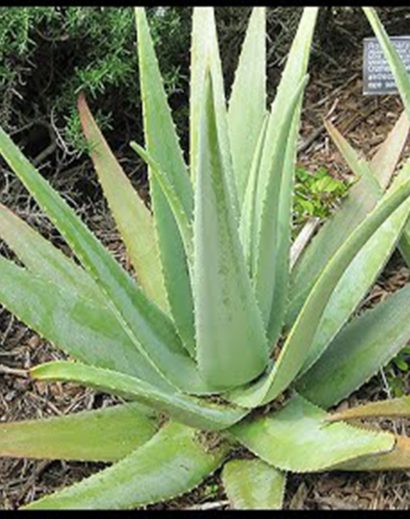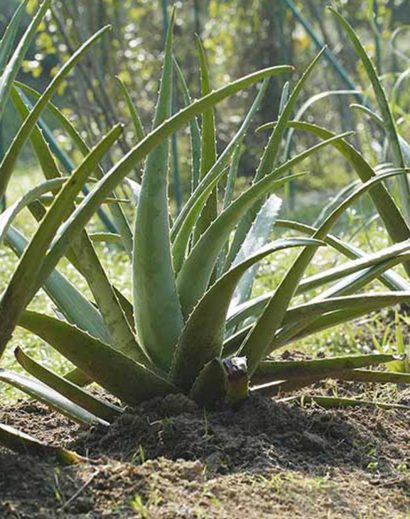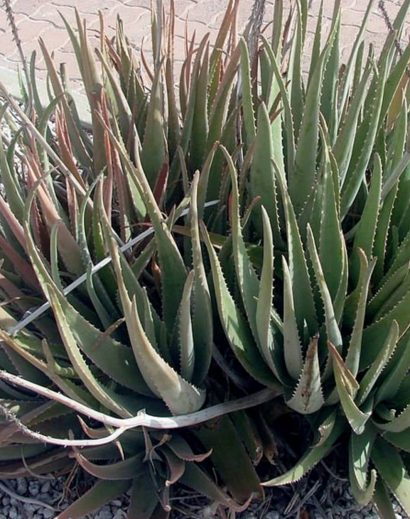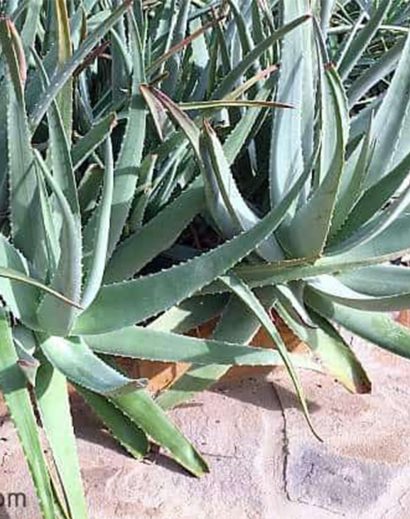Aloe vera, scientifically known as Aloe barbadensis miller, is a succulent plant that belongs to the Aloe genus. It is renowned for its numerous medicinal, cosmetic, and therapeutic properties. Aloe vera is native to North Africa, particularly the Arabian Peninsula, but it is now cultivated worldwide in various tropical and subtropical regions due to its many uses.
Here is a detailed description of Aloe vera:
- Appearance: Aloe vera is a perennial, stemless or short-stemmed plant that typically grows between 24 to 39 inches (60 to 100 cm) in height. It has thick, fleshy, lance-shaped leaves that are arranged in a rosette pattern. The leaves are usually green, but they can sometimes have a bluish or grayish tint.
- Leaves: The leaves of Aloe vera are its most distinctive feature. They are succulent, meaning they store water, and they are filled with a clear, gel-like substance that is rich in various bioactive compounds. The leaves can vary in size, with mature leaves being larger and reaching up to 18 inches (45 cm) in length. They have serrated edges and contain small white spots or lines on the surface.
- Flowers: Aloe vera produces tall, slender stalks with tubular, yellow or orange flowers that bloom from the center of the rosette of leaves. These flowers are typically arranged in clusters and are attractive to pollinators like bees and hummingbirds.
- Gel: The gel found within the leaves of Aloe vera is perhaps its most well-known and widely used component. This gel is known for its soothing and healing properties. It is rich in vitamins, minerals, amino acids, and enzymes, making it valuable for various topical applications.
- Medicinal and Cosmetic Uses: Aloe vera gel is used in various medicinal and cosmetic products. It is known for its ability to soothe and hydrate the skin, making it a common ingredient in skincare lotions, creams, and gels. It is also used to treat minor burns, sunburn, insect bites, and skin irritations. Some people also use Aloe vera gel internally as a dietary supplement, although it should be used with caution and under the guidance of a healthcare professional.
- Culinary Uses: While the gel is the most commonly used part of the plant, the latex, which is a yellowish substance found just beneath the skin of the leaves, has a bitter taste and is used less frequently. It can act as a laxative and is sometimes used in small quantities in certain traditional remedies.
- Easy Cultivation: Aloe vera is relatively easy to grow and maintain, making it a popular houseplant. It thrives in well-drained soil and requires plenty of sunlight but can tolerate periods of drought. It can also be propagated by separating offsets or “pups” that grow at the base of the parent plant.
In summary, Aloe vera is a versatile plant with a long history of use for its therapeutic and cosmetic benefits. Its gel is prized for its healing properties, and it is cultivated and utilized in various forms across the world for a wide range of applications.






Reviews
There are no reviews yet.